
Virginia has one of the highest bird diversities among states in the Eastern US, thanks to its geographic position, topography and climate. The 2nd Virginia Breeding Bird Atlas is a project to document the current geographic distribution and status of the Commonwealth’s breeding birds.
The Atlas is the largest avian survey project in Virginia, both in terms of geographic coverage (the entire Commonwealth) and the number of species surveyed (over 200 breeding species). In order to implement this ambitious project, the DWR partnered with the Virginia Society of Ornithology (VSO) and the Conservation Management Institute at Virginia Tech (CMI), along with a legion of citizen science volunteers across the Commonwealth. With over 1,400 volunteers participating, the Atlas is Virginia’s largest citizen science project to date.
The overarching goal behind the Atlas is to provide Virginia’s citizens and conservation partners with information that can be put to good use for avian conservation. With an estimated 3 billion birds lost from the United States and Canada since 1970, such information is more important now than ever. Improved understanding of where our bird species currently occur, in what numbers, and how their distribution within Virginia has changed over the past quarter century will enable us, collectively, to more efficiently target conservation efforts and actions on the ground. It will also provide us with a data set on Virginia’s bird distribution and abundance against which we can make future comparisons.

Yellow Warbler. Photo by Bob Schamerhorn.
Phase One – Data Collection (Completed in 2020)
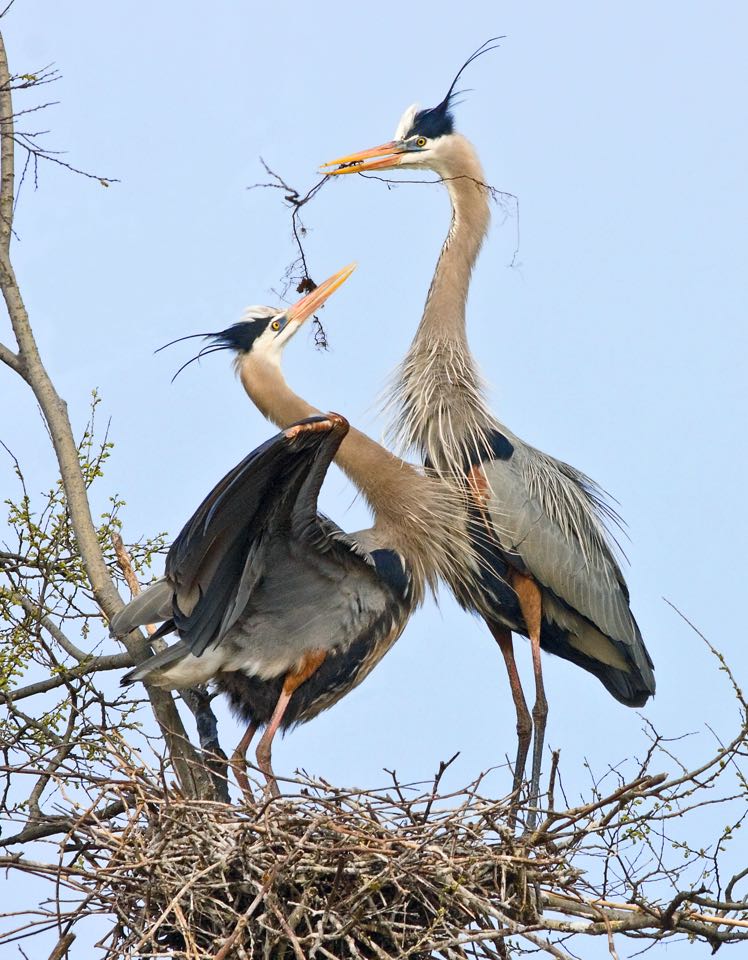
Great Blue Heron. Photo by Bob Schamerhorn.
In Phase One, volunteers collected and submitted breeding bird data over a 5 year period (2016-2020) across a grid of Atlas Blocks covering the entire state. Volunteers worked under the guidance of the Atlas Coordinator, Dr. Ashley Peele, to produce over 5.5 million bird records across the entire state! These records reside in the Atlas eBird data portal and are viewable by anyone with an internet connection. A big thank you to all of the volunteers who participated in the Atlas, and to all of the volunteer Regional Coordinators who helped to guide it!
Between 2017 and 2020, the Atlas also employed field technicians to conduct point count surveys across the state. Through these surveys the techs systematically collected data on bird abundance in order to complement the volunteer-generated data. This effort has resulted in the largest baseline data set of its kind on the Commonwealth’s breeding birds, with over 15,000 points surveyed and over 230,000 individual birds counted.
Phase Two – Data Analysis (In Progress)
In Phase Two, through funding by the DWR, CMI is reviewing and analyzing the massive data sets generated by the Atlas. These analyses will generate a number of products that will be shared with the public and which will help guide future avian conservation efforts in Virginia.
All Atlas data will undergo a stringent review and quality control. We will also compile data collected through breeding bird surveys by natural resource agencies and organizations between 2016 and 2020; these data will be integrated with the Atlas data. This will result in a final, comprehensive Atlas data set that will be hosted by DWR and made available online to the public. Data review will run for approximately one year starting in January 2021.
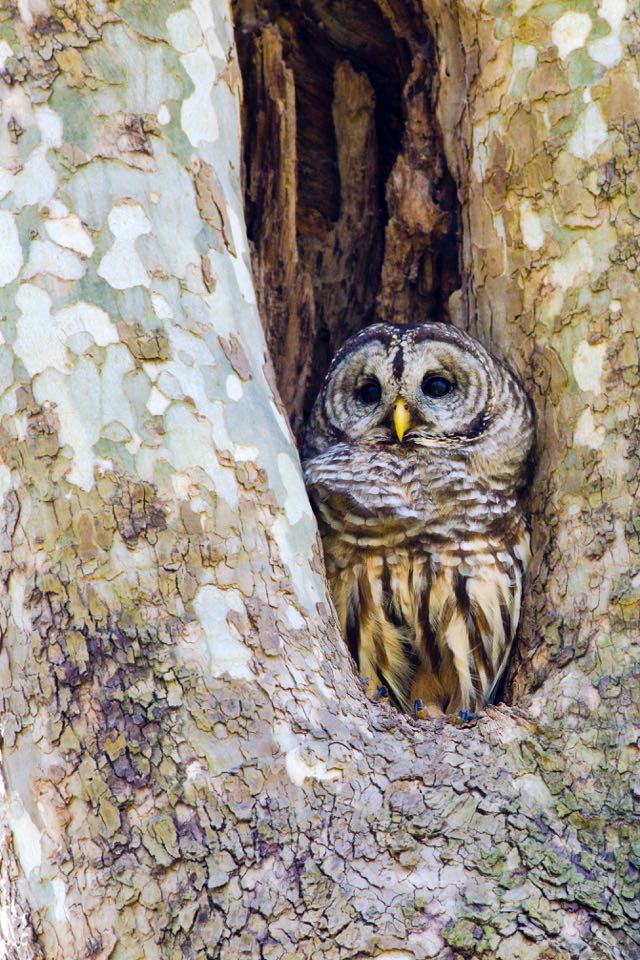
Barred Owl. Photo by Bob Schamerhorn.
The comprehensive Atlas data set will form the basis of several analyses over the subsequent course of approximately 1.5 years. These analyses are tied to specific objectives:
- Taking a “snapshot in time” of the current distribution of Virginia’s breeding birds. The comprehensive Atlas data set will be used to produce maps depicting the distribution of each documented breeding species.
- Comparing the results of the first Atlas to those of the current Atlas. Between 1985 and 1989, the DWR partnered with the VSO and nearly 800 citizen scientists on the 1st Virginia Breeding Bird Atlas. Comparing the two Atlases will shed light on changes in distribution for individual species over the past 30 years. Although programs such as the North American Breeding Bird Survey already tell us how bird populations have changed over time, maps produced through the Atlas will indicate where these population changes have unfolded on the landscape. By documenting where particular species are losing or gaining ground in the Commonwealth, we will be better positioned to identify where these species may benefit from conservation action.
- Producing maps of species abundance and generating species population estimates. Abundance data adds a third dimension to species distribution data by not only informing us of where a species occurs, but in what numbers. The bird abundance data collected by field technicians will be used to produce density maps for many species across the state, revealing where in the state individual species are more and less abundant. From these maps we will also generate credible population estimates for many of the bird species for which we lack such information.
Phase Two – Atlas Products (In Progress)
While data review and analyses are taking place, the DWR, VSO and CMI will be working to determine how best to package together all of the above information and to make it available to the public. These Atlas products are anticipated to be completed by the end of 2025.
Atlas Media
Atlas Updates for Phase Two

Atlas Updates: Entering the Final Stretch and 2024 Summary
It is happening – we have officially entered the final year of our work to bring you the Atlas results as a comprehensive, freely accessible website. Read more…
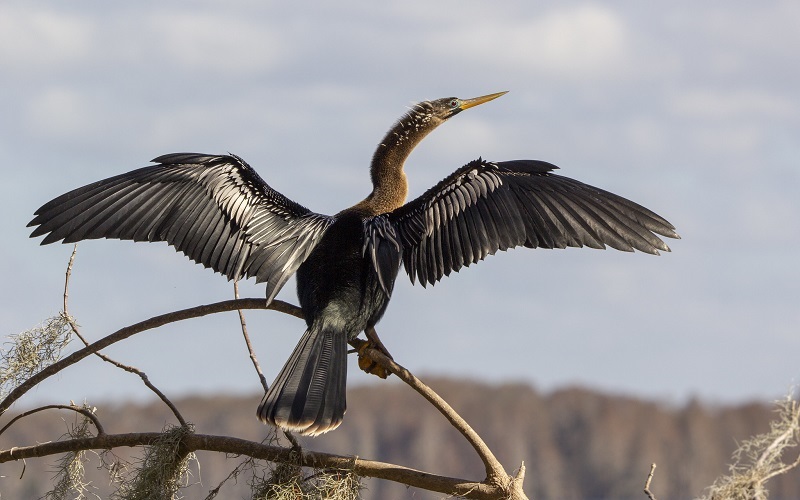
Atlas Updates: 2023 Summary
2023 was a seminal year for the Atlas project, as it took several big leaps forward toward publishing the Atlas results as a website in the fall of 2025. Read more…

The Atlas: A Bird Conservation Tool for the 21st Century
There are many facets of conservation, including land protection, habitat management, and education and outreach, among others that the atlas informs. Read more…
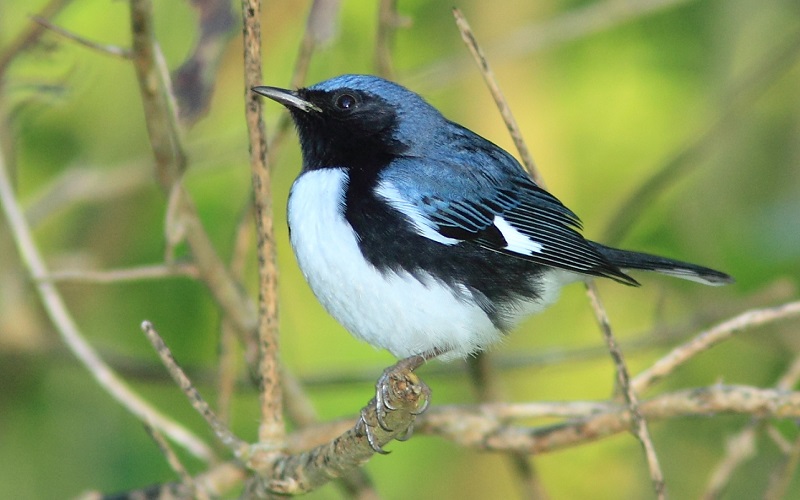
Atlas Updates: 2022 Summary
In 2022, the Atlas Final Products Committee continued to work toward the goal of publishing the Atlas results as a website in the fall of 2025. Read more…

Atlas Updates: 2021 Summary
In 2021, the Atlas Final Products Committee charted a course for transforming the raw data collected for the Atlas into published final products. Read more…
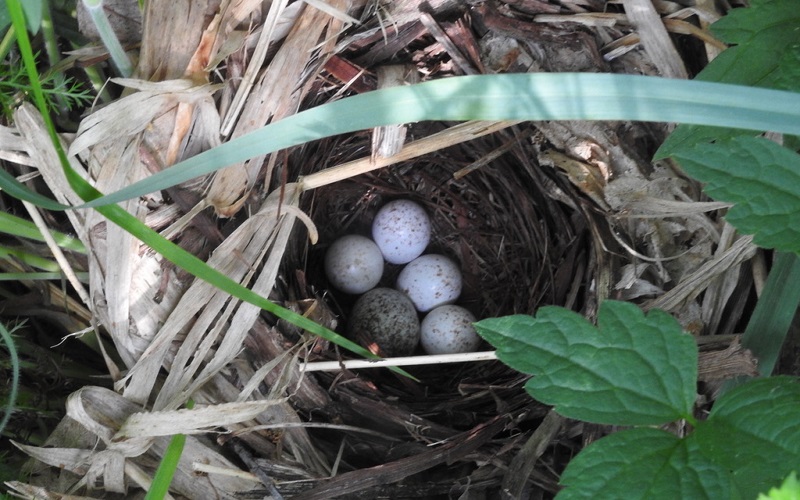
A New Phase of the Atlas
Five years have passed in the blink of an eye, with the data collection phase of the Atlas having successfully concluded, and a new phase just beginning. Read more…
New blog articles with updates on our progress will be published here during Phase Two of the Atlas. You can receive these and other Atlas-related updates directly by joining our email list.
Subscribe NowArchived Phase One Blog Articles
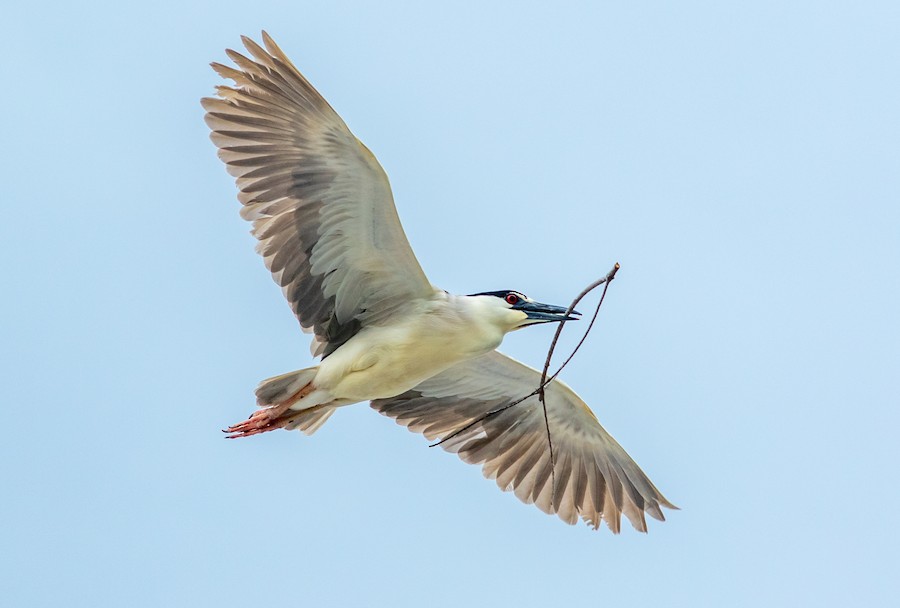
A Race Well Run – Post-season Update 2020
Drab little Cape May and Tennessee Warblers flit through the tree lines, while streams of Common Nighthawks track southward through the river valleys. Read more…
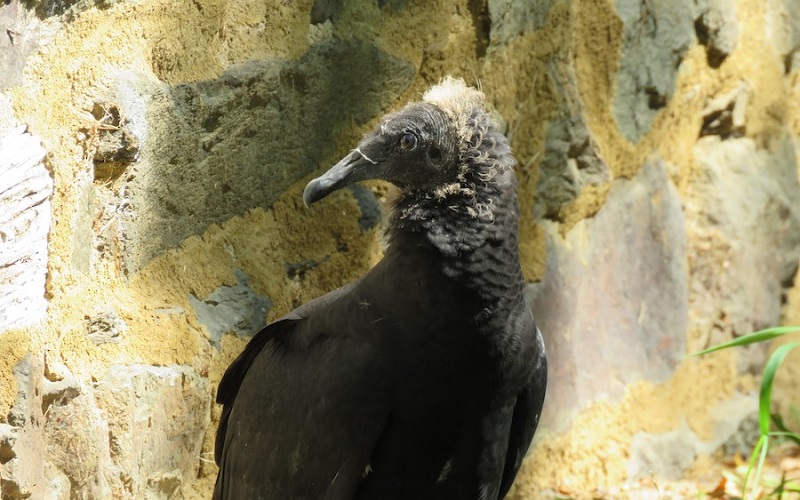
Sniffing out the Late-Season Chicks
As the Atlas project wraps this final data collection season, we wanted to remind our volunteers that the time has come for late season breeding codes. Read more…
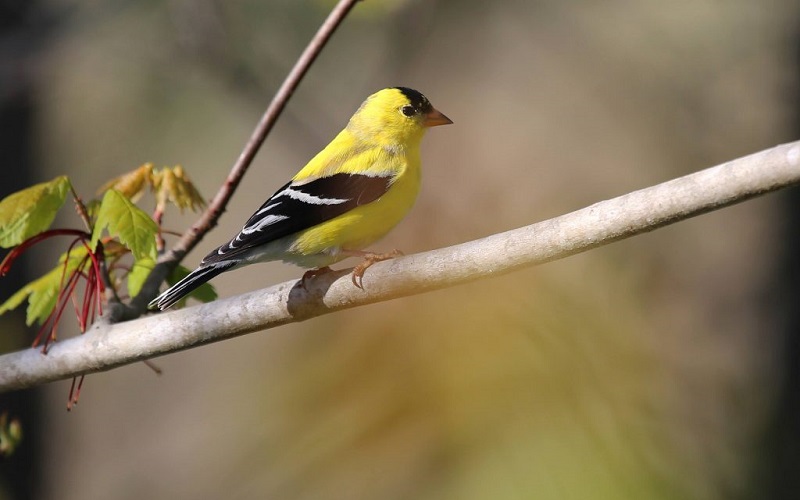
Fall Migration Approaches, Once Again…
The start of this year’s Fall migration season marks the final phase of our five-year VABBA2 journey bringing an end to the second VABBA. Read more…
Other Phase One Atlas Media

VABBA2 Happy Hour 2: Breeding Codes
The first 30 minutes of this video focus on a brief review of breeding code basics, followed by a deep dive into the 8 most common breeding code errors Watch…
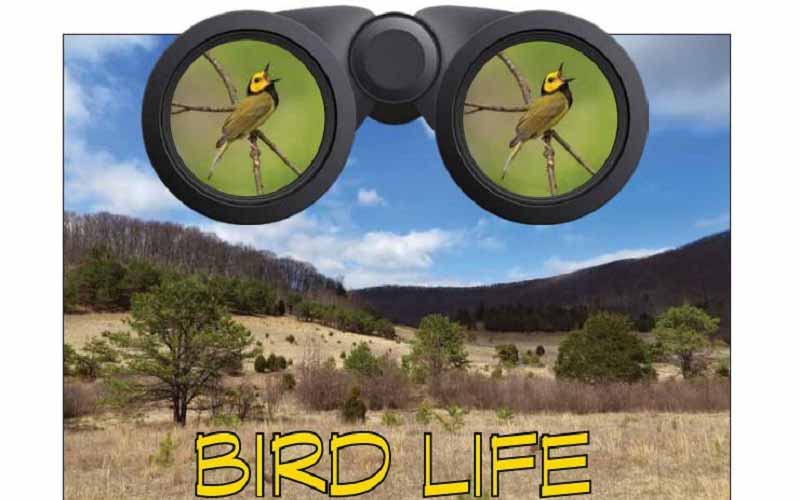
Bird Life
Bob Biersack spent two years exploring the Goshen Wildlife Management Area for the second Virginia Breeding Bird Atlas. The experience was both unexpected and profound. Read more…
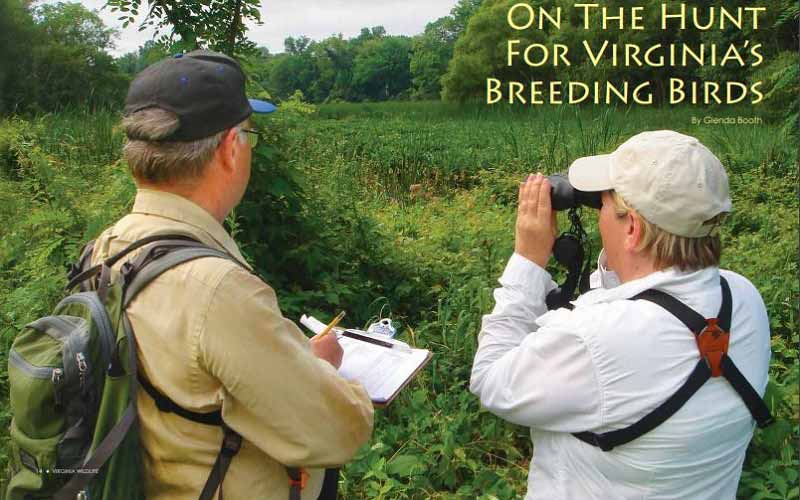
On the Hunt for Virginia’s Breeding Birds
Ashley Peele was stopped in her tracks when a male cedar waxwing near a female hopped in circles, fluttered his wings violently, and begged like a juvenile bird. Read more…

Virginia’s Breeding Bird Atlas 2 – Citizen Science Project
Learn about the exciting citizen science project going on in Virginia and be a part of this 5 year study to identify the location of Virginia’s breeding birds! Watch…
Additional Information
- VSO Atlas Webpage: for further information on Phase Two of the Atlas
- 2nd Virginia Breeding Bird Atlas Website: for information on Phase One of the Atlas
- eBird Atlas Portal: to explore the Atlas data collected by volunteers

